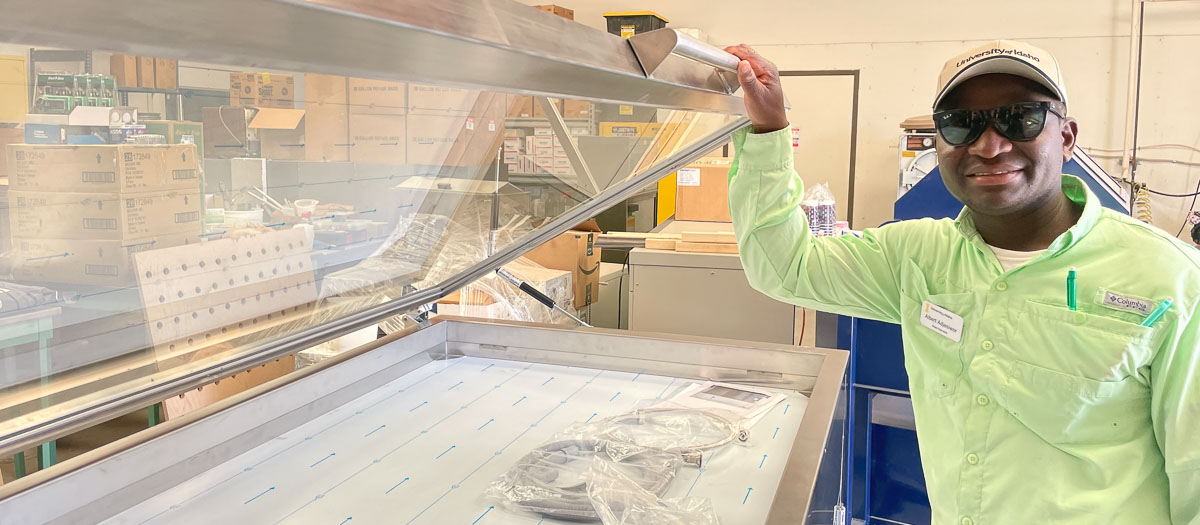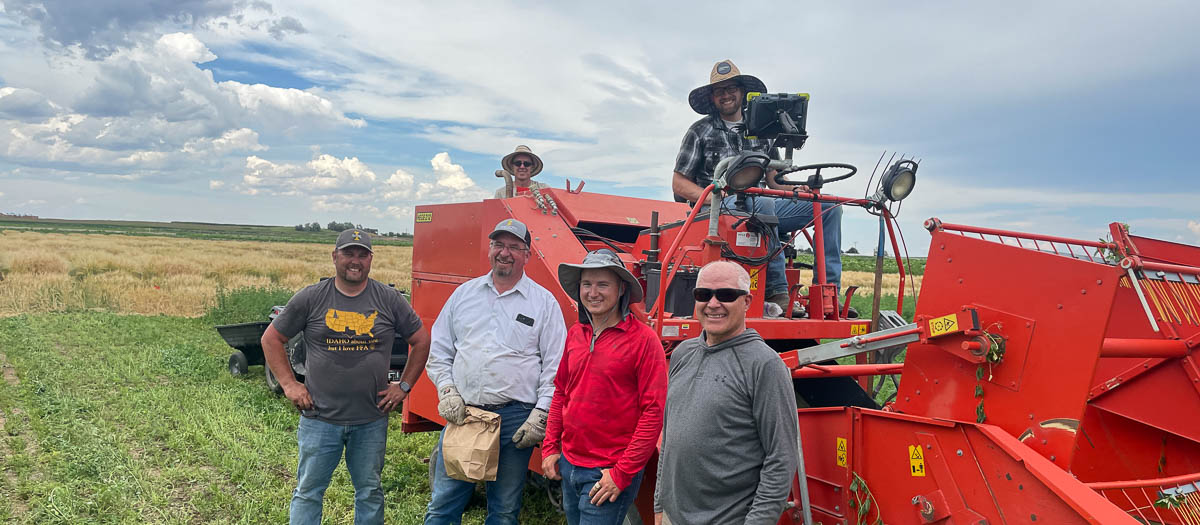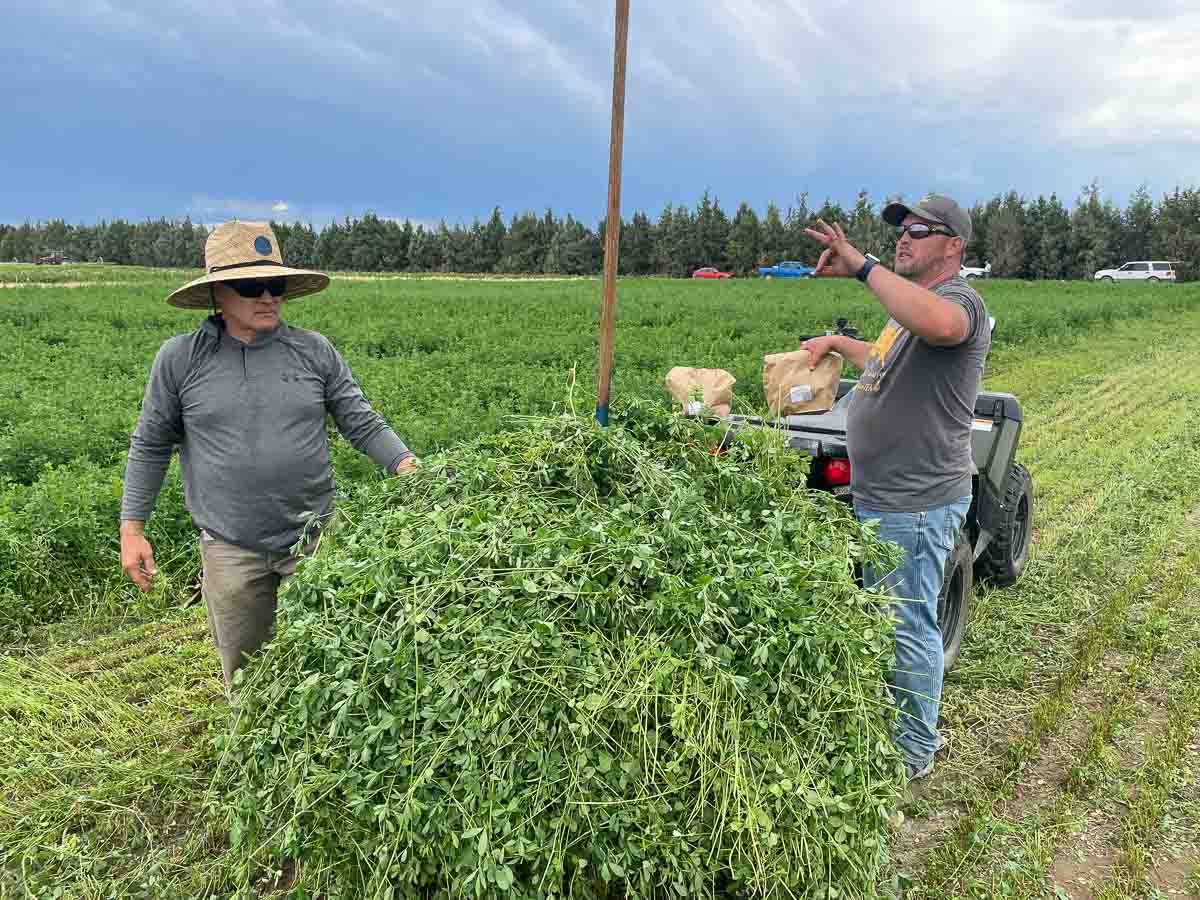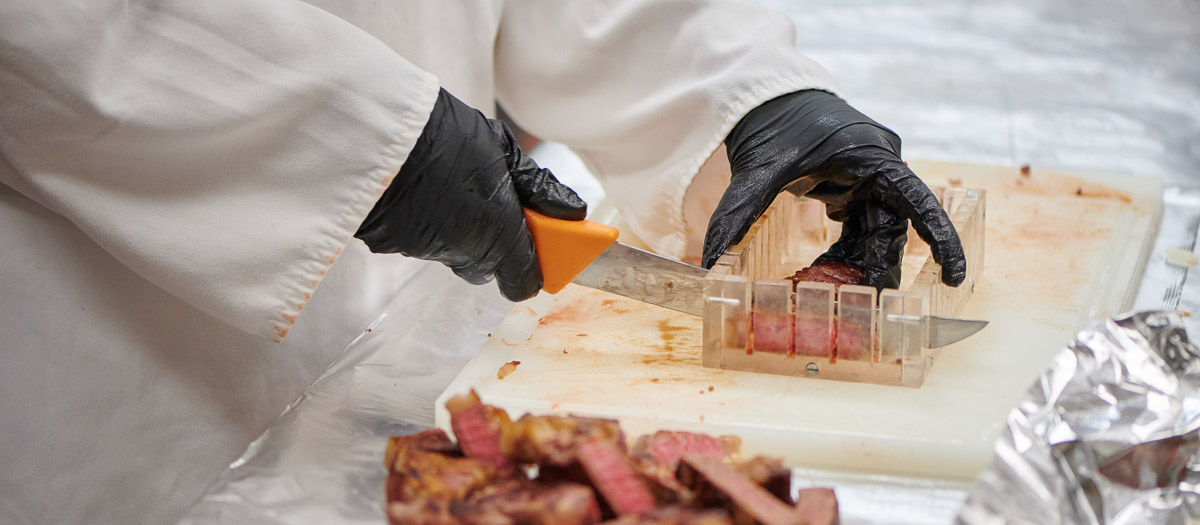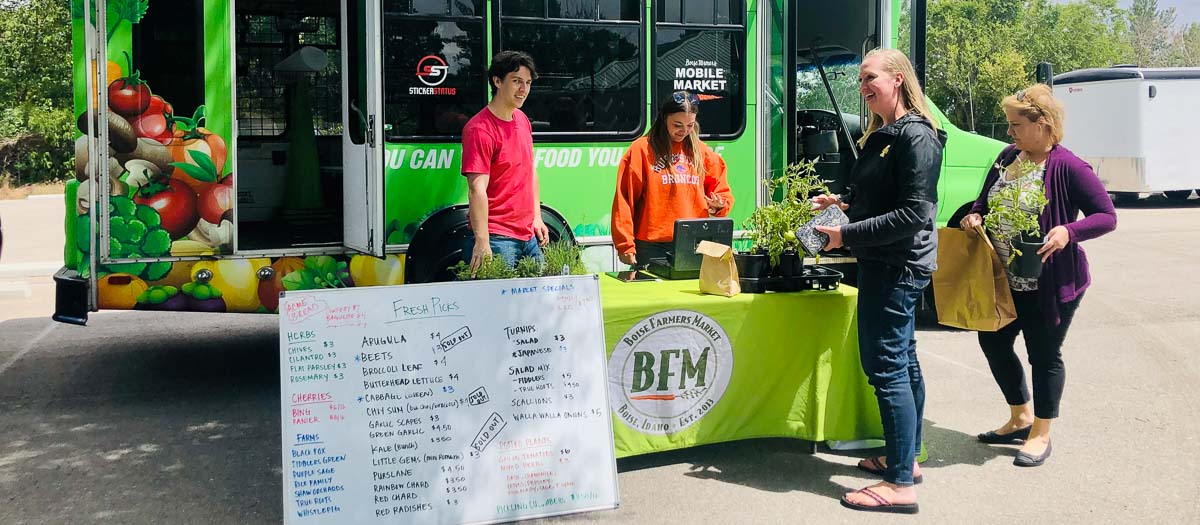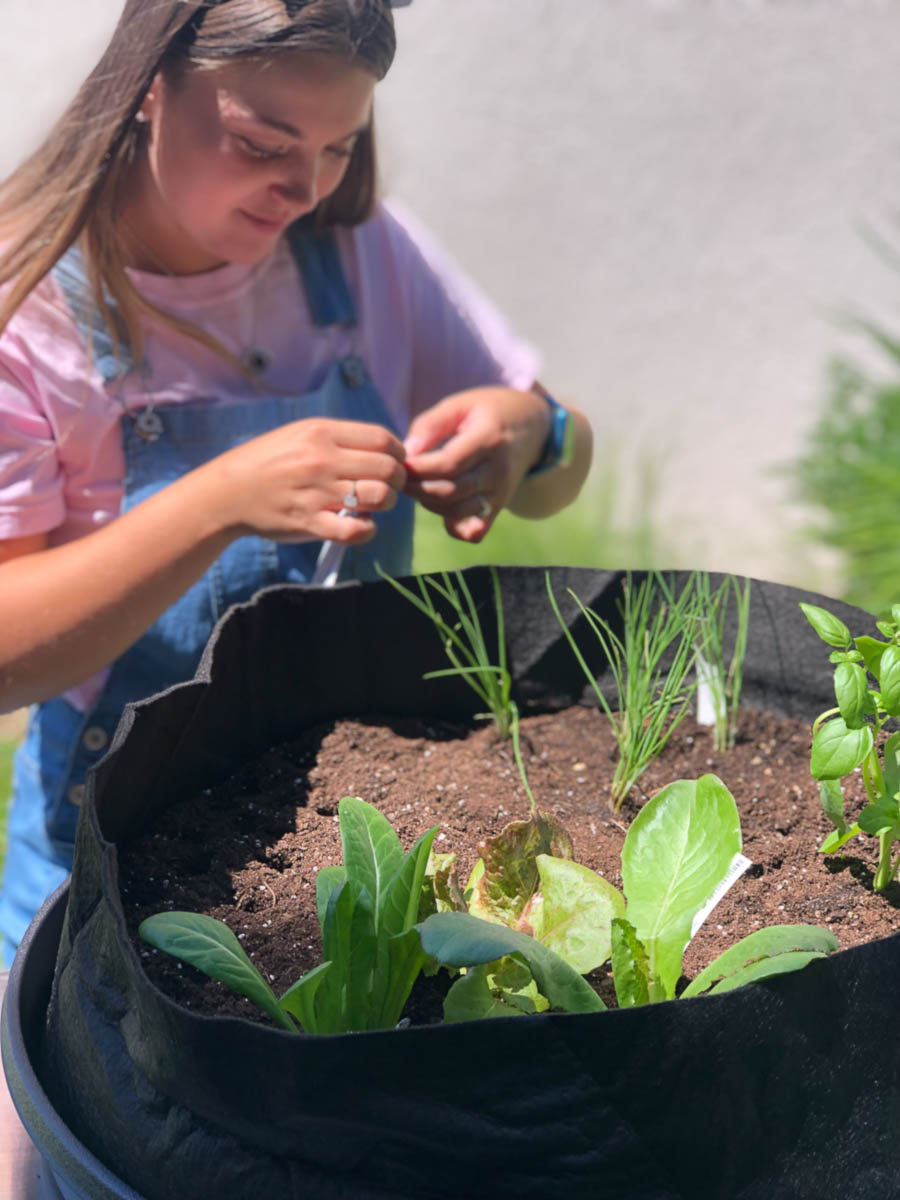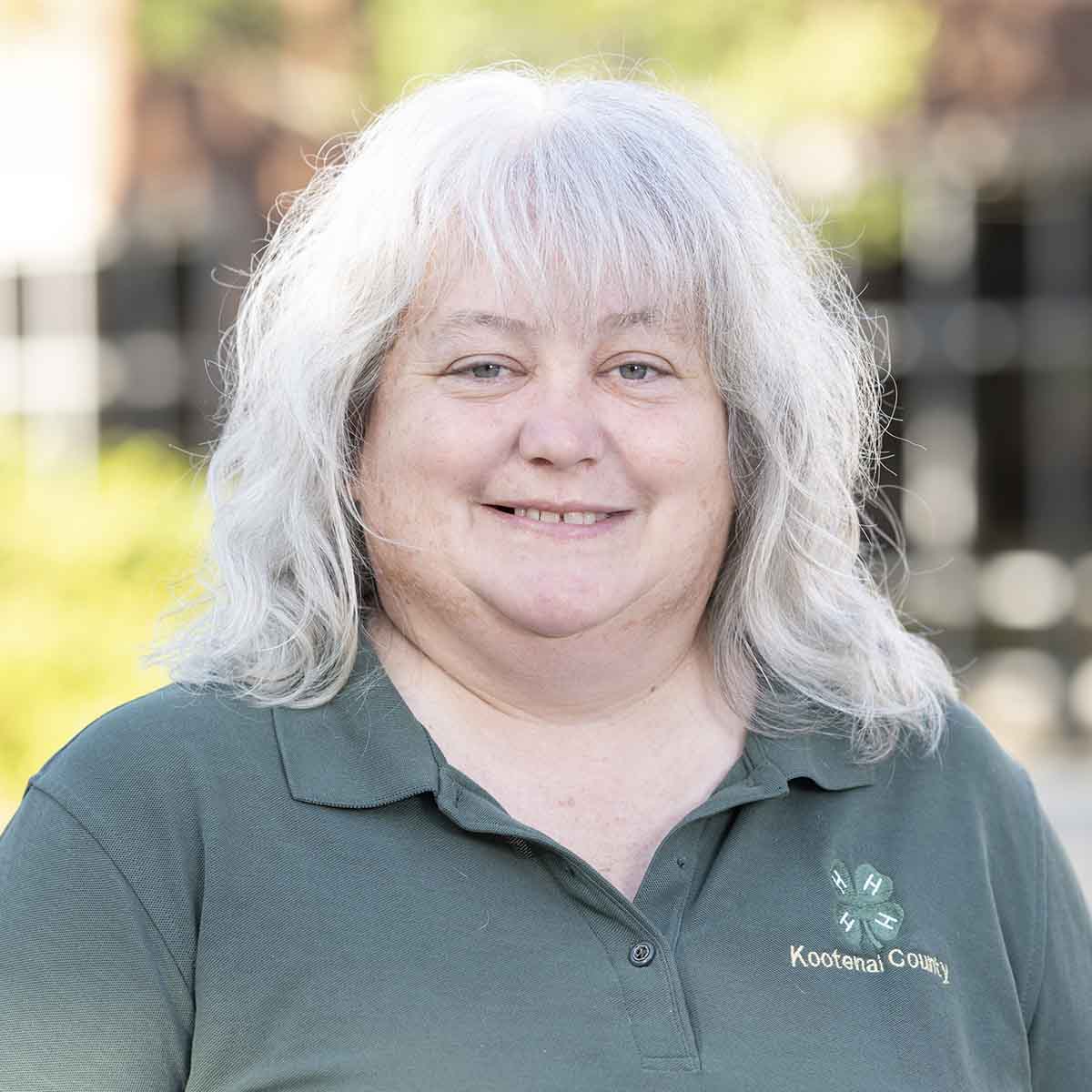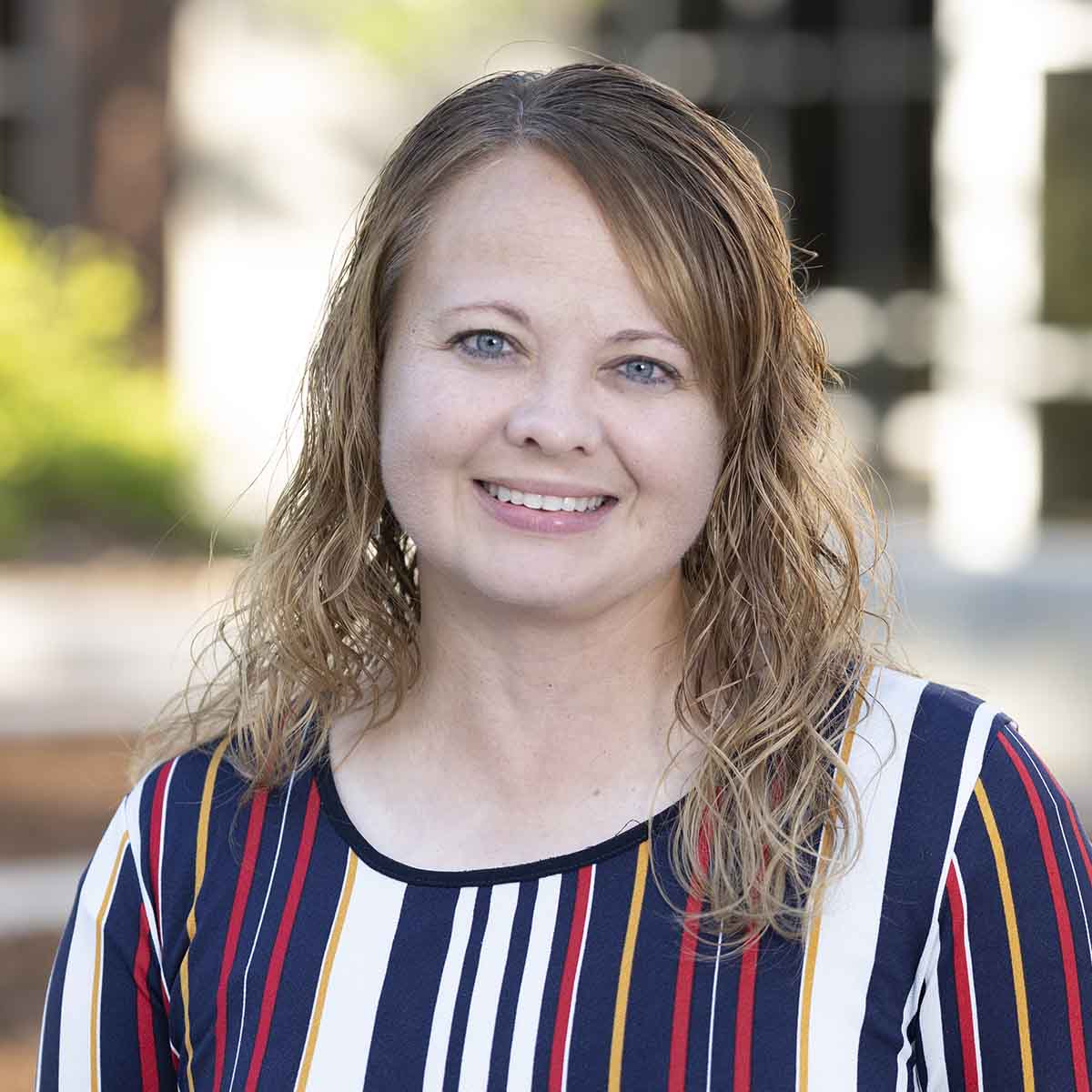Extension ExPress, November 2023
Director’s Message
We can draw a composite sketch of a typical University of Idaho Extension stakeholder using feedback from a series of public listening sessions, surveys and industry focus groups we’ve conducted.
Among many of our core clientele, agricultural programs remain a priority. In fact, several of them are involved in commercial food production, hobby farming or horticulture. They value youth development — especially programs that teach soft skills, financial skills and good citizenship. They’d likely participate in more of our programs but haven’t heard about some of them, and though they still prefer in-person program delivery, they’re more willing than ever to join us virtually or through a hybrid format encompassing both virtual and in-person content. Most importantly, they’re outspoken about the tremendous value of Extension and they appreciate our presence in their communities.
The mission of University of Idaho Extension is to provide reliable, research-based education and information to help people, businesses and communities solve problems, develop skills and build a better future. Based on the recent feedback we’ve gathered; we can be confident that we’ve stayed in the right lane. Our areas of expertise include agriculture, community development, family and consumer sciences, natural resources and youth development. The survey we administered was completed by 923 clients from throughout the state and included a relatively even distribution of ages. More respondents were involved in farming or ranching than any other sector. Related fields such as agribusiness, forestry and natural resources and food processing were also high on the list, and three-quarters of respondents indicated they’re likely to participate in agricultural programs. About a third of survey respondents have a child aged 12 or younger in their household. Nonetheless, 59% indicated a willingness to participate in youth development programs — not surprising to those of us who are familiar with the many volunteers who continue serving 4-H long after their own kids have grown.
We conducted a separate survey of county commissioners, who provide us with important program support and space to operate UI Extension offices in 42 of the state’s 44 counties. Commissioners identified workforce development, agriculture and small-acreage farms, emerging agricultural technologies, farm succession and input costs and maintaining adequate funding for our programs as their top Extension-related priorities for the next five years. We in UI Extension need to be on the cutting edge, and teaching our stakeholders how to best utilize emerging agricultural technologies could present an exciting new area for programming. Commissioners encouraged us to be more connected with equipment manufacturers and technology companies, and I envision us also tying in with precision agriculture courses offered at our Moscow campus. We gathered verbal feedback from stakeholders who attended listening sessions hosted in eight Idaho communities, plus two online sessions. Listening session participants prioritized teaching career development and soft skills through our youth and 4-H programs. They appreciate that we teach budgeting and family and consumer sciences courses that are no longer taught at school. They like instruction in water conservation and quality, soil health and adapting to a changing climate. Finally, as new people move into the state, they see a need for increased agricultural advocacy, explaining the importance of production agriculture and raising awareness of rural norms among an increasingly urban population.
The demographics of our state are changing, and we’ve been up to the challenge of delivering relevant programs in response to this shift. Idaho has seen dramatic growth in its population of residents over 65 years of age, as retirees from other states move here to take advantage of the high quality of life and lower cost of living. Our Hispanic and Latino populations are also on the rise — comprising 41% of the population of Clark County, for example. We’re serving senior citizens with a host of UI Extension programs. Through our Dementia Friends program, we’re giving volunteers an understanding about dementia, and training them how to turn that knowledge into action. Our Senior Produce Program (YouTube) in Caldwell provided senior citizens with vouchers to buy nutritious food from their local farmer’s market. Our Idaho Master Gardener Program has helped seniors find a fulfilling activity while spending time outdoors. Our Five for Five (PDF) program promotes physical activity and could be an ideal fit for seniors seeking to stay healthy. Serving the Hispanic community, we have bilingual Extension educators who speak Spanish in several counties. We’ve been translating Extension publications into Spanish and we also offer Spanish-language programming at our annual Idaho Potato Conference.
More than a century after the Smith-Lever Extension Act established the Cooperative Extension System in 1914, we’re more relevant than ever. Our clients say they don’t know what they’d do without us. We’ve made great efforts to maintain a strong local presence, working in communities where clients consider our staff and faculty to be trusted friends. Our research-based approach makes us highly credible. The data shows we’ve made our mark, and we continue to find creative new ways to help people, businesses and communities solve problems, develop skills and build a better future.

Barbara Petty
Associate Dean and Director
University of Idaho Extension
Extension Impact
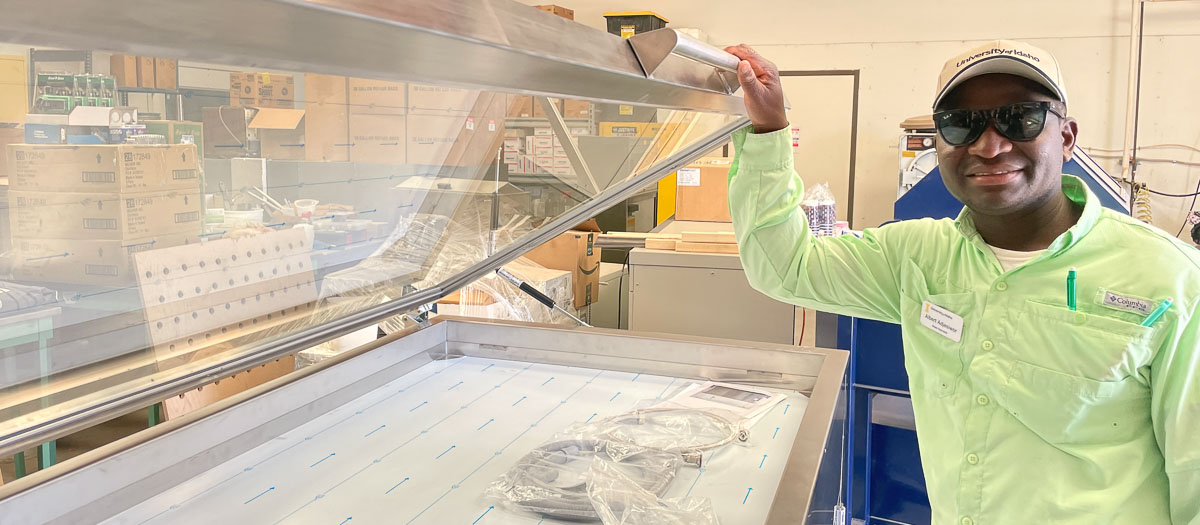
New Table Facilitates Weed Research
Scientists at the University of Idaho Kimberly Research and Extension Center have a new machine for studying how temperature affects weed emergence.
Results of testing using the new thermogradient table will inform development of predictive models to help growers pinpoint when weeds are likely to emerge to time the application of herbicides.
Researchers have been collecting weed seeds from throughout Idaho to grow within the stainless-steel table. Weed seeds will be germinated either on specialized growing paper or in containers filled with sterilized soil, and the researchers will test how quickly weeds emerge when the table is set at various temperatures ranging from 35 degrees to 110 degrees.
The table will also let the researchers test how different levels of soil moisture affect weed seed emergence and the activation of soil-applied herbicides.
The model developed from the data will be posted on the Pacific Northwest Herbicide Resistance Initiative website, which is currently under development, where growers will input local temperature to determine how soon they’ll likely encounter emergence of various weed species and the percentage of weed seeds that will likely emerge at each temperature threshold.
“Because of herbicide resistance, small grain growers are increasingly relying on soil-applied (preemergence) herbicides to control grassy weeds. Weeds that emerge before preemergence herbicides are applied won’t die,” said Albert Adjesiwor, a UI Extension weed specialist. “Being able to predict the best time to apply these herbicides will be very helpful to growers to maximize weed control.”
Research using the table began in October. Adjesiwor’s doctoral student, Chandra Maki, will lead the study for her dissertation in weed science.
“We know there are substantial differences in temperature — heat accumulation; growing degree days — and moisture across the PNW. We expect specific weeds from different conditions to behave a bit differently and this project would help us assess and map these differences,” Maki said.
Maki is curious to see how regional differences may lead weed seeds from various parts of the state to emerge at different rates under the same conditions. For the purpose of the model, emergence dates of weeds from throughout the state will be averaged together, recognizing equipment from one part of Idaho may be used for field work in another area of the state, introducing outside weeds.
The thermogradient table will also help researchers understand how the soil temperature and moisture may affect herbicide activation. For example, when soil temperature is too high, certain herbicides may volatilize quickly and be rendered ineffective.
The table was funded with roughly $24,000 from the Pacific Northwest Herbicide Resistance Initiative, a cooperative project under USDA’s Agricultural Research Service involving researchers in Idaho, Washington and Oregon. Partners involved in weed research under the project in the three states have been sharing ideas and collaborating on various projects to maximize the benefit of this initiative to our stakeholders and also to avoid duplication of effort.
The Idaho Wheat Commission, Idaho Barley Commission and Idaho Grain Producers Association have supported this initiative.
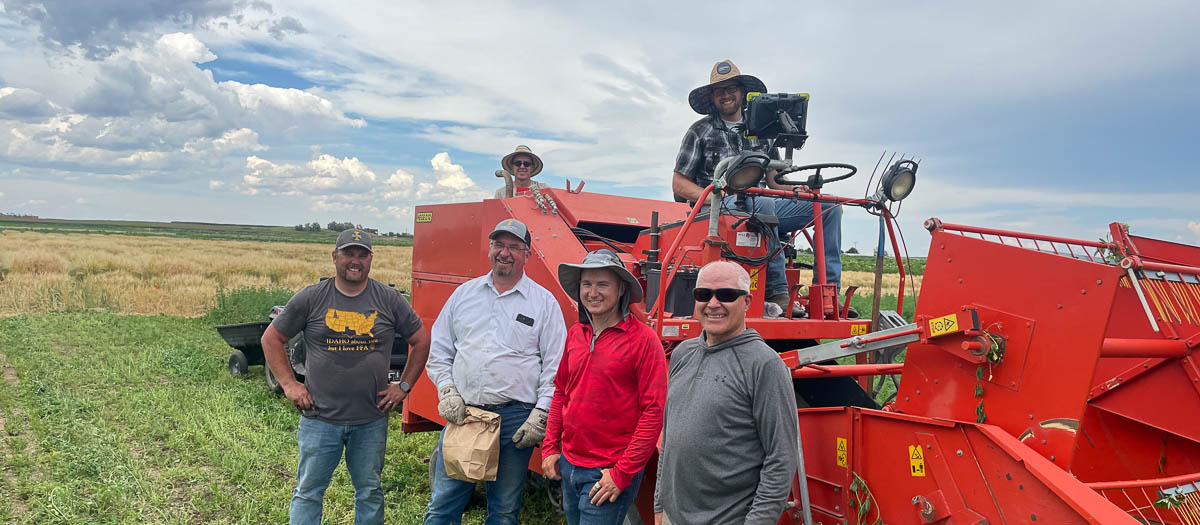
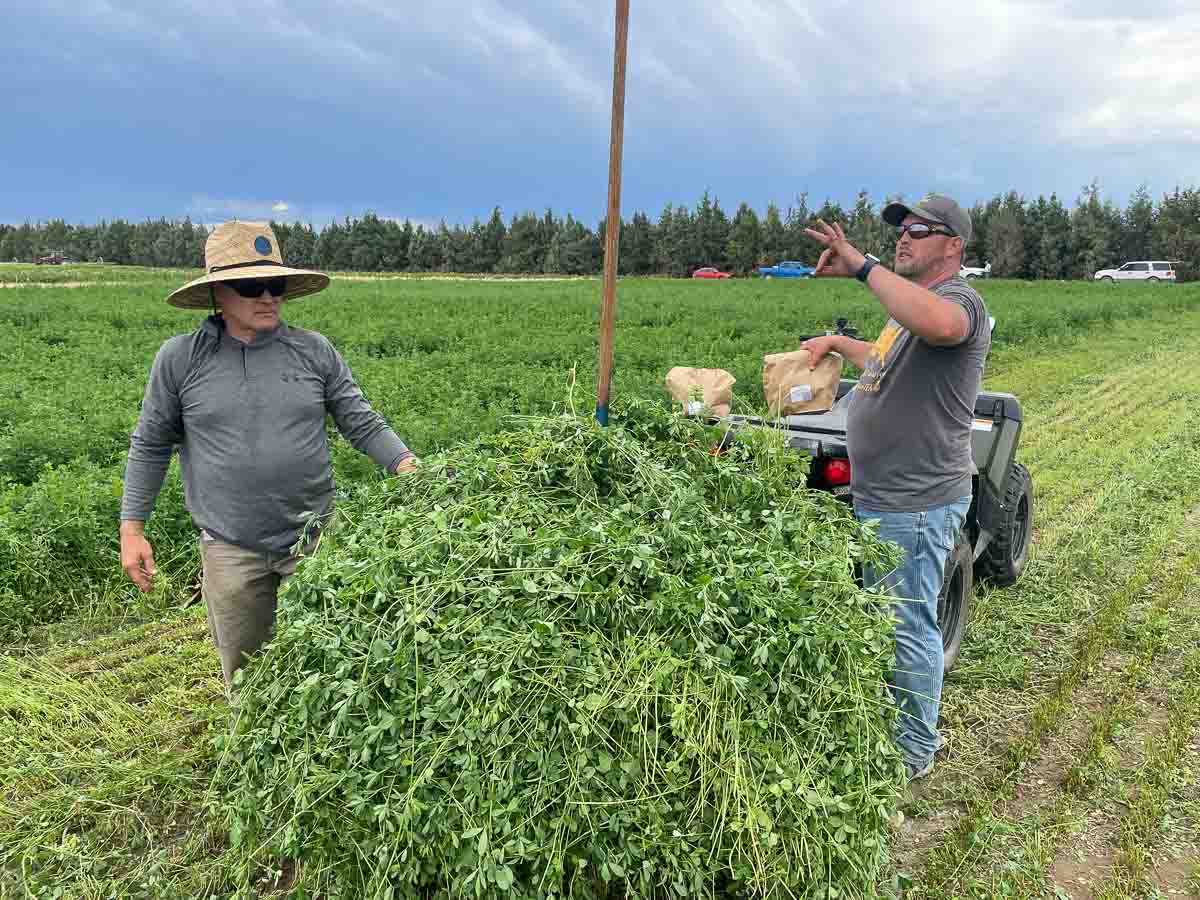
Annual Alfalfa Shows Benefits
University of Idaho Extension forage and small grains researchers are testing a seemingly counterintuitive theory that local farmers could reap rewards by planting alfalfa varieties that weren’t bred to withstand Idaho’s cold winters.
The team is in the first year of a planned three-year trial at the University of Idaho’s Aberdeen Research and Extension Center evaluating the planting of non-dormant alfalfa varieties — those that don’t enter winter dormancy — in Idaho as a means of improving soil health and fixing extra nitrogen to benefit future crops.
Alfalfa is traditionally raised as a perennial crop that remains in production for four or five seasons, until declining hay quality and yields prompt farmers to remove it. As with most legumes, alfalfa can produce nodules on its roots where soil bacteria convert nitrogen from the atmosphere into a plant-usable form.
UI Extension researchers Jared Spackman, Reed Findlay, David Callister, Jared Gibbons, Joseph Sagers and Tom Jacobsen anticipate Idaho farmers stand to significantly increase nitrogen fixation by planting alfalfa varieties developed for warmer states, such as Arizona, that don’t have to expend energy late in the season to become winter hardy. Read more.
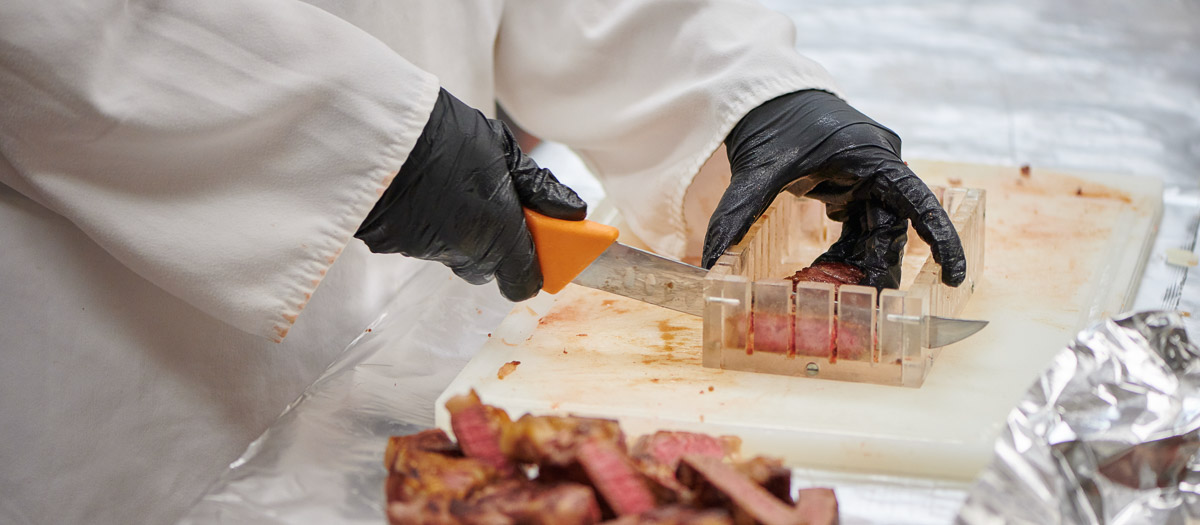

Beef Improving Child Cognition
A recently published University of Idaho study finds consuming beef during the critical first year of life strongly correlates with improved cognitive function among 3- to 5-year-olds.
The paper, “Early Life Beef Consumption Patterns Are Related to Cognitive Outcomes at 1-5 Years of Age: An Exploratory Study,” was published Oct. 26, 2022, in the scientific journal Nutrients.
Annie Roe, a UI Extension specialist focusing on nutrition and cognition research and an assistant professor in the Margaret Ritchie School of Family and Consumer Sciences, was the study’s principal investigator. The research team also included the school’s director, Professor Shelley McGuire, as co-principal investigator and Victoria Wilk, a Moscow resident who worked on the project to earn a master’s thesis in family and consumer sciences and is now enrolled in medical school through the WWAMI program. The study was funded with a $50,000 grant from the Idaho Beef Council.
“From birth to 5 years old, what is fed is critical for brain development. There is reason to believe that what is eaten early on carries on through life,” Roe said. “There are times in brain development if we do not provide these key nutrients in the right amounts then there are deficits that can’t be overcome later in life.”
The researchers evaluated 61 children, about half of whom were 3 to 5 years old and the rest of whom were under three. Parents completed surveys explaining their perceptions about nutrition and the types of foods they fed their children between 6 months old and 1 year old. The team also administered tests assessing the cognitive ability of children. They used the National Institute of Health Toolbox to assess cognition of children in the older age group, who played five different games on an iPad.
While results were inconclusive with children under three, the researchers found a strong correlation between beef consumption during the second six months of life and the ability to pay attention and inhibitory control — the ability to demonstrate proper responses to stimuli — in 3- to 5-year-olds. Consumption of the key nutrients zinc and choline was also correlated with better cognition.
The team calculated nutrient values of diets using specialized software. Because infants eat small servings, it’s crucial to feed them nutrient-dense foods.
“We were really looking at food rich in those nutrients for brain development. Beef happens to be one of those foods,” Roe said.
While the study provides Roe and her colleagues with evidence that the benefits of feeding beef to infants warrant further research, it wasn’t designed to indicate causation. It didn’t include a control group and socioeconomic status wasn’t factored. Other external factors, such as whether families dined together and engaged in conversations during meals, could also have influenced cognitive function.
“I’m really cautious in the conclusions of our study,” Roe said. “We’re not saying beef is the miracle developmental food everyone has to include. We’re saying beef, probably because it is rich in these nutrients that are important for early childhood development, is related to improved cognition later in life.
“I think this is the beginning of a series of studies that can help us have a bigger picture of how we should feed young children.”
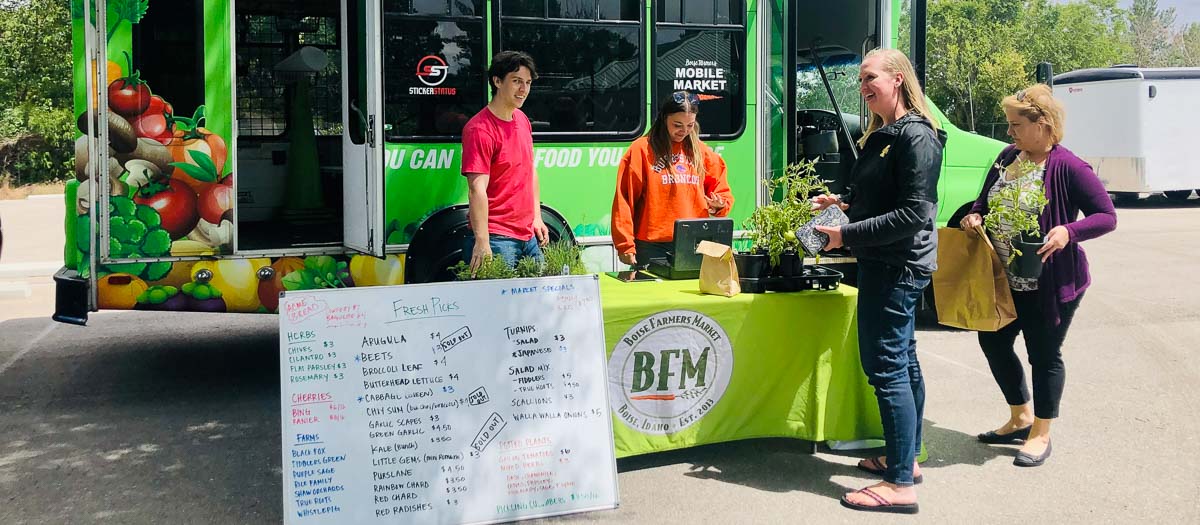
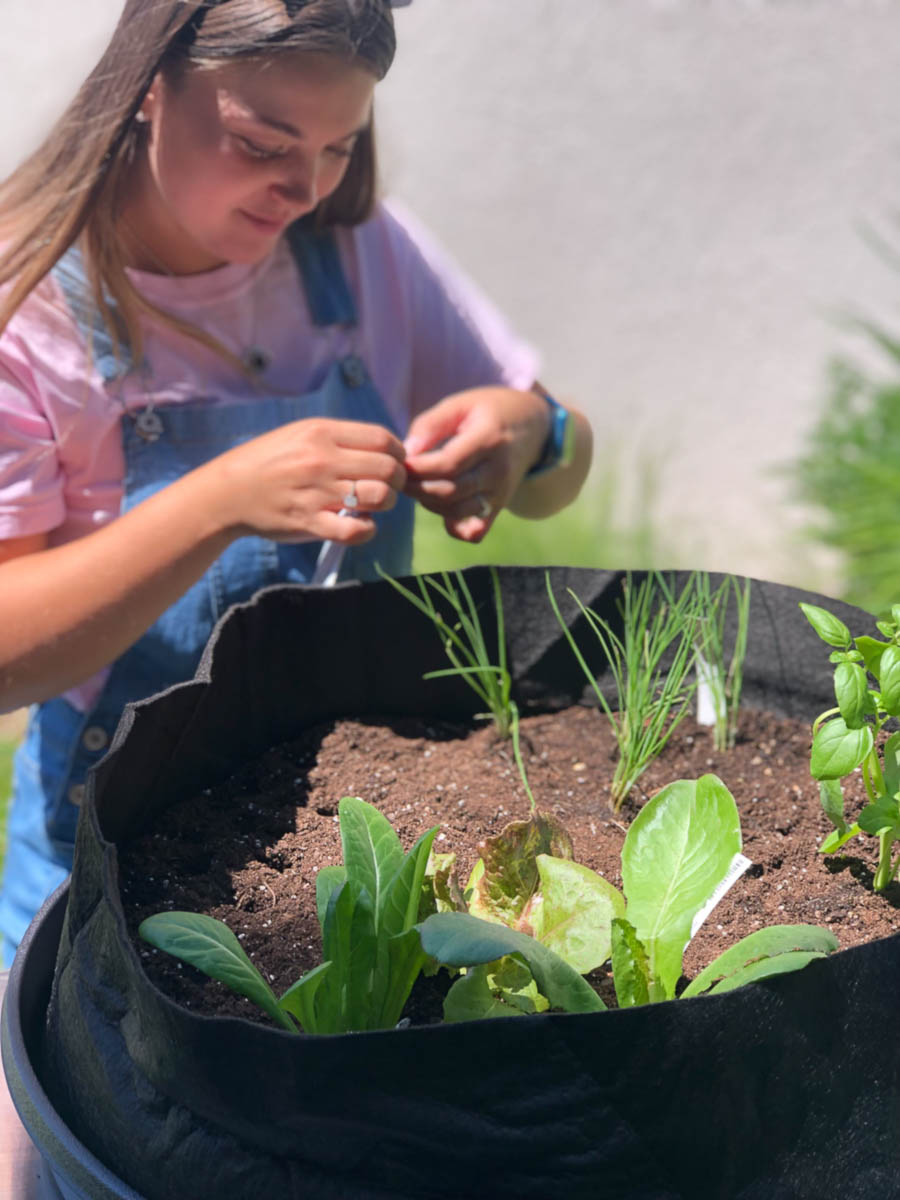
Interns Making Key Contributions
As a 2023 summer intern with University of Idaho Extension in Ada County, McKenna Schmitt helped launch a new program to teach young children how to garden indoors.
Through her internship, Schmitt also joined staff on the Boise Farmers Mobile Market’s “veggie van,” traveling to neighborhoods with poor access to fresh produce and bringing the farmers market to them.
Every summer, UI Extension provides 400-hour, paid internships to students enrolled in Idaho public universities and colleges, such as Schmitt, who experience the real-world applications of lessons they’ve learned in class. Often, UI Extension internships represent the first step on the path toward a fulfilling career for participants. Read more.
Faculty Spotlight
Teresa Balderrama
Teresa Balerrama is the new associate Extension educator focused on 4-H youth development. Prior to starting her current position in December of 2022, she worked as program coordinator for Kootenai County 4-H for eight years. She provides leadership for various aspects of day-to-day 4-H operations in Kootenai County, including enrollment, volunteer training a dog program and a variety of local educational events.
View ProfileCody Beus
Cody Beus is the new UI Extension educator for Boundary County focused on agronomy, small farms and horticulture. Beus provides classes and workshops focused on local agricultural needs, including the Idaho Master Gardener Program. Cody joins us from Palmer, Alaska, where he worked as an FFA advisor and consultant for the Knik Tribal Conservation District. Cody grew up on a dairy farm in southcentral Alaska. He has been a wildland firefighter, owner of a small nursery and a reindeer agritourism operation. His professional background includes a certificate in agribusiness, a bachelor 's in agricultural education from the University of Idaho with a minor in horticulture, and a master’s in natural resources: agroforestry from the University of Missouri. He has served as the secretary of the Alaska State Fair, president of the Mat-Su Chapter of the Alaska Farm Bureau and member of the Agriculture Advisory Council for the Mat-Su Borough. He enjoys plants, making community connections and the outdoors.
View ProfileJemila Chellappa
Jemila Chellappa is a new area Extension educator focused on cropping systems. She has a doctorate in soil science, a master’s in soil science and agricultural chemistry and a bachelor’s in agriculture. She worked as a postdoctoral fellow at Clemson University and most recently has taught agriculture courses at Oregon State University in La Grande, Oregon. She has considerable technical training in soil conservation, nutrient and manure management and plant disease management. She has a comprehensive understanding of Extension and a vision for organizing multi-faceted and collaborative Extension programs that serve the needs of Treasure Valley growers and stakeholders.
View ProfileAdrianne Griebel-Thompson
Adrianne Griebel-Thompson is an assistant professor and Extension specialist in health and nutrition, and family and consumer sciences. The aim of her work is to ensure optimal growth and development of infants and toddlers through nutrition.
View ProfileKari Ure
Kari Ure is the new UI Extension educator focused on family and consumer sciences, serving Bear Lake and Caribou counties. She graduated from Brigham Young University–Idaho in health promotion and lifetime wellness and from Weber State University with a master of education. She worked for Utah State University Extension in central Utah as a county faculty member. Her interests include health and wellness, finance education and relationships. She is grateful to move closer to family. She enjoys learning new skills, creating music, woodworking and cooking. She and her husband love rural living, agriculture, skiing and working together on projects.
View ProfileFeatured Publication
Practical Coping Skills for Managing Stress (BUL1053)
Stress is inevitable — it’s a natural part of life. Because everyone experiences it at some point in time, it’s important to know how to work with it in healthy ways. This three-page bulletin shows you the way by discussing four coping strategies (physical, social, intellectual and mindful actions) to help guide your management of it. Includes numerous resources to further investigate the basic concepts.
Featured Video
Lindsey McConnell-Soong, program manager for Idaho’s Well Connected Communities Initiative, and Ariel Agenbroad, an area Extension educator specializing in community food systems and small farms, shared an informational YouTube video about the Senior Produce Program in Caldwell.
Featured Events
- Fill the CALS Food Pantry
Nonperishable items accepted in front lobby of E.J. Iddings Agricultural Science Building, 606 Rayburn Ave., or make monetary donations virtually. - Introduction to QuickBooks for Farming and Ranching | Nov. 28 and Dec. 5, 12, 19 | Virtual
A beginner’s guide to using QuickBooks Desktop Pro for your farm or ranch. - Giving Tuesday | Nov. 28 | Virtual
- Farm Financial Analysis | Nov. 29 and Dec. 6, 1, 20 | Virtual
Topics covered include production records, balance sheets, income statements, cash flow, enterprise and partial budgeting and farm financial analysis. - How Insects work and How to Manage Them | Nov. 30 | Virtual
This talk will provide an overview of the major physiological systems insects and how these symptoms are targeted by pest management strategies. - Advanced Ranch Management School | Dec. 4-8 | Twin Falls
- Kids in the Kitchen Virtual Cooking Club | Dec. 7 | Virtual
Youth of all ages are welcome for this virtual cooking program but should have adult supervision while participating in the class. - Safe Gifts from the Kitchen | Dec. 7 | Virtual
Visit the UI Extension calendar for a complete listing of upcoming events offered online and across the state.
Feedback or suggestions? Please pass them along through calsnews@uidaho.edu.
Sign up to receive Extension ExPress as a quarterly e-newsletter.







